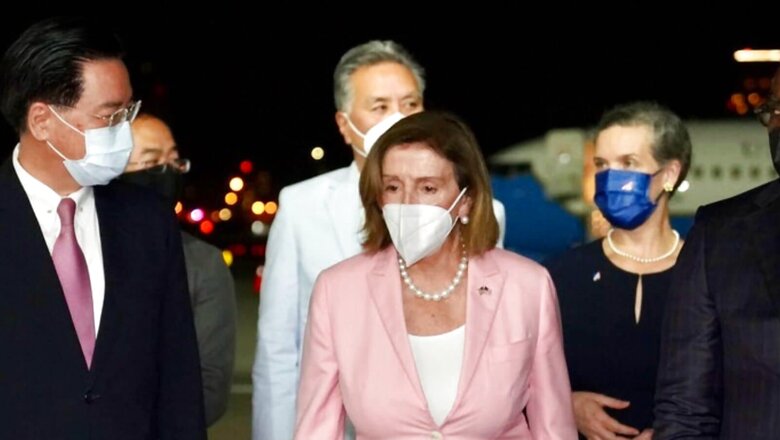
views
As ASEAN marks its 55th anniversary, its midyear foreign ministers’ meeting (AMM) of 3 August 2022 was as usual accompanied by two important ministerial meetings of ASEAN-centric bodies. The AMM was followed by the 12th East Asia Summit (EAS) foreign ministers meeting and the 29th ASEAN Regional Forum (ARF) ministerial meeting — both on 5 August.
These meetings were chaired by the current ASEAN chairman, Cambodia, through Prak Sokhonn, Deputy Prime Minister and Minister of Foreign Affairs and International Cooperation. India was represented by Saurabh Kumar, Secretary (East) in the Ministry of External Affairs (MEA). External Affairs Minister (EAM) Dr S Jaishankar had attended the ASEAN-India meeting on 3 August.
The ASEAN Regional Forum in this set of meetings is most important because it meets only at the ministerial level. The EAS FMs report into the EAS summit which is held along with the ASEAN summit in November annually. The ARF is mainly a security-related institution and the oldest among the ASEAN-centric bodies. It was established in 1994, even before Cambodia, Laos, Myanmar, and Vietnam joined ASEAN. The EAS, on the other hand, has 18 members compared to the ARF’s 27.
Honed by consensus-based decision-making and candid dialogue, the ARF composition of 27 members includes the 10 ASEAN member states (Brunei, Cambodia, Indonesia, Laos, Malaysia, Myanmar, Philippines, Singapore, Thailand, and Vietnam), 10 ASEAN Dialogue Partners, including Australia, Canada, China, the European Union (EU), India, Japan, New Zealand, South Korea, Russia, and the United States; Bangladesh, North Korea, Mongolia, Pakistan, Sri Lanka, Papua New Guinea, and Timor-Leste. The UK is the new 11th dialogue partner of ASEAN but has not sought ARF membership for now. Timor Leste is the potential 11th member of ASEAN waiting in the wings.
It was a hectic time for the Indo-Pacific region which the EAS and ARF cover. The traditional problems with North Korea over its nuclearisation persist. Chinese belligerency in the South China Sea has become endemic. It lingers on with promises of a code of conduct in the South China Sea with ASEAN. They resumed discussions in 2017 but have yet not gone beyond the preamble.
To this were added the Covid pandemic and economic recovery after that. The Ukraine war and sanctions on Russia and the aggressive US campaigning for them in the Indo-Pacific region challenged ASEAN countries in both their centrality and their unity. The visit of US House Speaker Nancy Pelosi to Taiwan, besides Japan, Korea, Malaysia, and Singapore, ruffled the Indo-Pacific because of Chinese anger at the visit leading to actions exhibiting military power and economic measures against Taiwan. If the Pelosi visit was to reinforce American intent to work more closely with its allies, Japan and Korea, and ASEAN countries like Malaysia and Singapore, it was overshadowed by the visit to Taiwan, which, therefore, was the main focus of discussion at the ARF.
ASEAN abhors US-China rivalry in the region as it does not want to choose sides. While the region welcomes increased US engagement and investment, it likes to avoid a showdown. The AMM issued a short statement on cross-strait development. Reaffirming ASEAN’s One-China policy and concern with the volatility, “especially in the recent development in the area adjacent with the ASEAN region, which could destabilise the region and eventually could lead to miscalculation, serious confrontation, open conflicts and unpredictable consequences among major powers”.
This could not be avoided as China and the US squared off at the ARF with Beijing showing immense anger and trying to rally support from ASEAN countries and others. The US pretended that it had done nothing wrong and China was overreacting. Significantly, while in previous ARF meetings, it is the US delegation that took an aggressive position on the South China Sea, this time the situation was reversed with China taking the aggrieved position.
It was surprising that China carried this animus to a point where its foreign minister walked out of the commemorative dinner hosted by his Cambodian counterpart. Russian Foreign Minister Sergey Lavrov had done this at the G20 foreign ministers’ meeting in Bali on 6 July, but this time he attended the dinner and only Wang Yi left the venue. Surely, China was angry with the United States, but to embarrass its Cambodian hosts who are among its closest allies within the ASEAN was uncharacteristic. The ‘I will not sit at the table with you’ approach is not good diplomacy from any side and makes things difficult for the hosts. The participation of Lavrov did not seem to elicit any walkouts at ARF.
The 29th ARF exchanged views on international and regional issues, as well as the future direction of the ARF. Besides the Taiwan Straits, the dialogue at the ARF included a discussion on the South China Sea, Myanmar, Ukraine, and the Korean peninsula as well.
ASEAN is anguished by Myanmar preventing progress on the five-point consensus plan. The military junta orders saw over 2,100 civilian deaths and the execution of four Opposition activists a week before the AMM in Phnom Penh was a provocation to ASEAN too. AMM viewed the situation in Myanmar with dismay and continued the policy of not inviting a junta representative to its meetings. The Cambodian initiative to handle the junta with soft gestures has met a rude response and Cambodia is unlikely to be seeking to invest further political capital in Myanmar in its term as ASEAN Chair which concludes in November. Indonesia as the next Chair is expected to have a clearer posture.
Myanmar and Taiwan pushed the South China Sea to a lower position in discussion but ASEAN maintains the hope that it will conclude the code of conduct (CoC) this year. The resumption of physical textual negotiation of the Single Draft CoC Negotiating Text through the convening of the 36th JWG-DOC in May 2022 is encouraging.
ARF adopted two Statements. One is the Statement on Promoting Peace, Stability and Prosperity in the Region through Preventive Measures; and the other is the ARF Statement on Supporting the Preservation of the Southeast Asia nuclear weapon Free Zone (SEANWFZ). These are to maintain ASEAN centrality and keep great power rivalry at bay, at least on paper. As part of India’s engagement with ARF, India co-chaired the 13th ARF Inter-Sessional Meeting on Maritime Security on 12 May 2022, and will co-chair the workshop series on International Ship and Port Facility Security Code (ISPS Code) during 2022-23.
The ARF was fully stretched this time to deal with myriad and complex issues which afflict the region and within ASEAN itself. All eyes are on Indonesia to give the ARF a significant boost to its initiatives, capacity, and efficacy.
Gurjit Singh is a former Ambassador to Germany, Indonesia & ASEAN, Ethiopia & the African Union. The views expressed in this article are those of the author and do not represent the stand of this publication.
Read the Latest News and Breaking News here

















Comments
0 comment